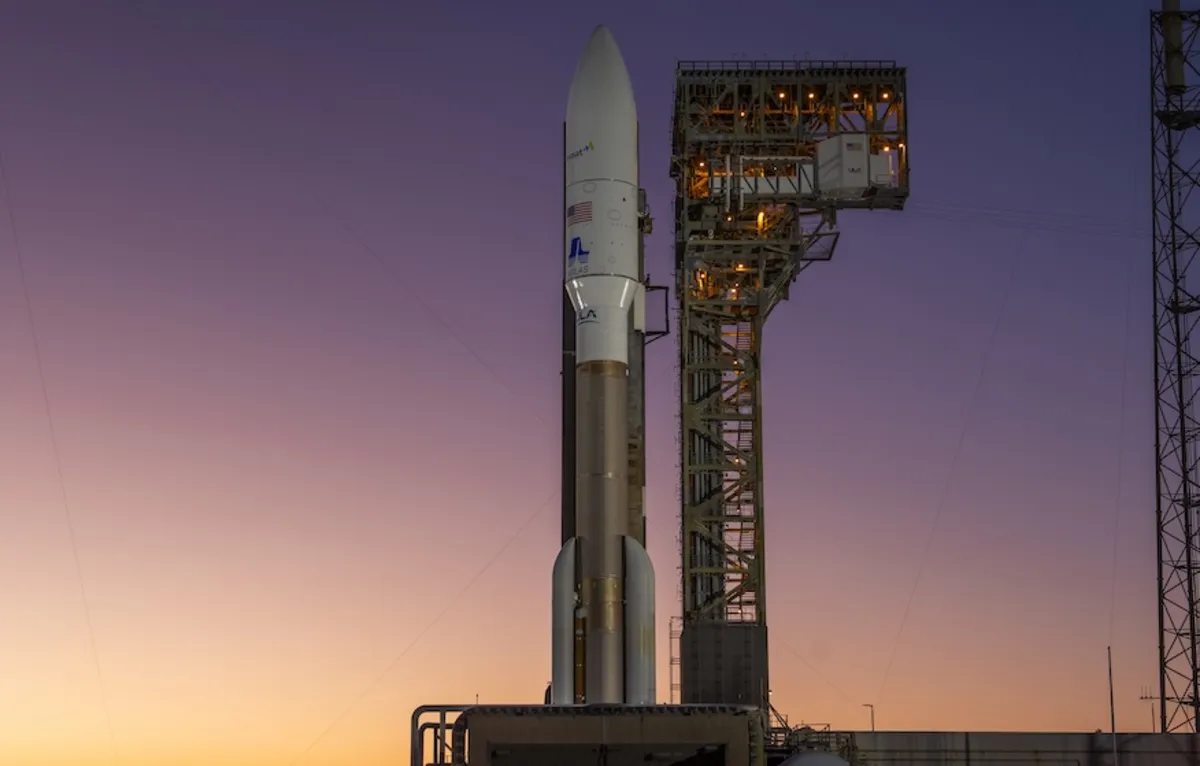
Update: As of November 5, 11:30 p.m. EST (0430 UTC), United Launch Alliance (ULA) has officially scrubbed the planned launch of its Atlas 5 rocket. This decision was made due to an unresolved valve issue that emerged during the final checkouts. The Atlas 5 rocket is set to carry a critical communications satellite for Viasat, a California-based communications company.
Following the launch scrub, ULA reported that the issue encountered while cycling the booster liquid oxygen tank valve could not be resolved within the launch window. Consequently, the team has targeted a new launch attempt for the following day. The next liftoff from Space Launch Complex 41 is scheduled for 10:16 p.m. EST (0316 UTC), marking the opening of a 44-minute launch window. Upon liftoff, the rocket will head due east from Florida’s Space Coast.
The Atlas 5 rocket is tasked with delivering a 6-metric-ton satellite to a geosynchronous transfer orbit. The deployment of the satellite, known as ViaSat-3 F2, is expected to occur nearly 3.5 hours after launch from Cape Canaveral Space Force Station. Spaceflight Now will provide live coverage of the launch, beginning an hour prior to liftoff.
According to the 45th Weather Squadron, there is a remarkable 95 percent chance of favorable weather conditions during the launch window. Meteorologists noted a minimal risk of interference from cumulus clouds. "High pressure will bring fair weather to the Space Coast on both the primary and backup days," stated the launch weather officers. "For the primary window, a ridge axis over Central Florida will develop light, onshore winds and partly cloudy skies."
The mission is being launched using the Atlas 5 rocket in its 551 configuration. Standing at 196 feet tall (59.7 meters), this powerful rocket is supported by five solid rocket boosters, which work in tandem with the RD-180 main engine to generate approximately 2.7 million pounds (12 megaNewtons) of thrust at liftoff. The solid rocket boosters will be jettisoned less than two minutes into the flight, followed by the payload fairings about a minute and a half later.
To reach the designated orbit for the ViaSat-3 F2 satellite, the Centaur 3 upper stage will perform three separate firings of the RL10C-1-1 engine. Following the satellite’s release, the upper stage will be placed in a so-called graveyard orbit nearly an hour later. This particular rocket has the designation of AV-100 and marks the 105th Atlas V rocket launched to date. After this mission, ULA will have a total of 11 Atlas V rockets remaining before the series is officially retired, with missions including Boeing’s CST-100 Starliner and Amazon’s Project Kuiper.
The ViaSat-3 F2 satellite is the second spacecraft in the ViaSat-3 series and will operate in geostationary Earth orbit. It follows the successful launch of the first satellite, ViaSat-3 F1, aboard a SpaceX Falcon Heavy rocket earlier in 2023. However, the first satellite experienced issues with its antenna, which delayed the start of service and reduced its capacity.
Viasat officials have stated that the new ViaSat-3 F2 satellite will significantly enhance the company's network capabilities, adding over 1 terabit per second (Tbps) of capacity over the Americas. After several months of on-orbit testing at its operating location of 79 degrees West longitude, the ViaSat-3 F2 spacecraft is anticipated to enter service in early 2026.
Mark Dankberg, Chairman and CEO of Viasat, expressed optimism about the new satellite's capabilities: "Beyond an incredible capacity increase, ViaSat-3 F2’s dynamic beam forming capabilities will greatly benefit our customers by efficiently deploying bandwidth to the highest demand places, allowing us to scale performance and the number and density of users." This will support Viasat's multi-orbit service offerings, including platforms like Viasat Amara and NexusWave, as well as a resilient hybrid SATCOM architecture for government clients.
The satellite is built on Boeing’s 702MP+ platform, which utilizes electric propulsion and solar arrays produced by Boeing subsidiary Spectrolab. Boeing is actively supporting Viasat in both launch operations and post-deployment checkouts. Michelle Parker, Vice President of Boeing Space Mission Systems, stated, "Our goal is to enable missions with reliability and timely delivery. With ViaSat-3 F2, we leveraged proven 702 heritage, advanced power systems, and all-electric propulsion to enable high-speed connectivity for users who rely on it."